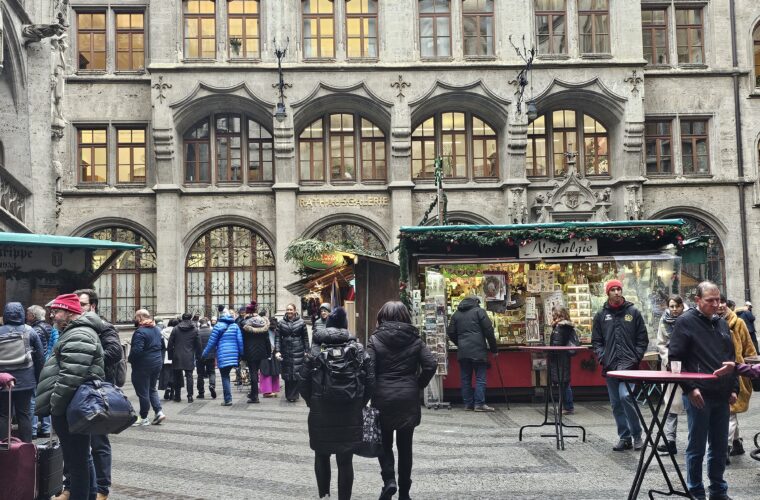Christmas environmental disaster: This is the time of year when, in theory, it is possible to observe the fascinating phenomenon of foliage, which is the autumn change in the colour of tree leaves that gradually changes from green to yellow to orange to red. A spectacle of nature that allows us to appreciate the passage of time and the cyclical nature of the seasons. In recent years, however, due to climate change and global warming, these changes are occurring later and later and are running out in a shorter time frame. Increased emissions of carbon dioxide and other greenhouse gases into the atmosphere, coupled with increased rainfall and heat, are, in fact, speeding up the plant growth process. However, there are natural limits within which plants can perform photosynthesis.
An increase in CO2 concentrations in the atmosphere corresponds to a decrease in the ability of plants to use it, a phenomenon known as CO2 saturation. This change also has consequences for foliage: if the growing season is lengthened, the change in leaf colour is also postponed. For example, in the northeastern area of the United States, the phenomenon now begins 10 to 14 days later than the standard. Torrential rains, storms and sudden frosts then abruptly break this process, making it even shorter.
Climate change
Not only in the fall of leaves the effects of climate change can also be seen in the high temperatures these days, which have reached values outside the norm and do not hint at decreasing. Taking advantage of the tropical weather mainly includes mosquitoes, which have continued to breed during this period and are again infesting our homes, parks, and gardens. In general, as experts explain, this disruption of the climatic balance causes disorientation former significant changes in the behaviour and habits of animals, which, for example, delay hibernating or, in the case of birds, migrating, staying longer in cities where temperatures are always higher, even during the winter months.
Despite this worrisome scenario, the first Christmas decorations, tree lights, and even bargain-priced cakes are already beginning to appear on the streets, in stores, and supermarkets in large cities. It is a jarring contrast between the mugginess and exceptional heat we feel outside and those typical symbols of the Christmas atmosphere, which refer to a typically cold and wintry scenario. Every year, Christmas comes earlier and earlier.
This is not only because of large-scale distribution but also through mass communication: radio, TV, and now even social media begin to bombard the public with Christmas advertisements, promotions and jingles a full two months before Christmas Eve. This is certainly not only a cultural issue but, above all, a matter of marketing and money: to give an example, U.S. singer Mariah Carey has been earning from her iconic “All I Want For Christmas Is You” about $600,000 a year for twenty-eight years, that is, since the song was released back in 1994-a treasure trove that to date amounts to more than $60 million. With global sales of over 16 million, it is the best-selling Christmas single by a female artist of all time.
Xmas is every day, almost
After all, it’s no mystery that Christmas-related business is thriving. According to Jungle Scout’s report, 31 per cent of respondents start buying gifts as early as the end of October. Adding to this trend in recent years is the marketing masterpiece that perfectly combines tradition, religion, and consumerism: Black Friday, or the Friday after Thanksgiving, which falls on the fourth Thursday in November.
It is a crucial date for businesses and entrepreneurs that marks the start of a series of highly profitable and mainly online discount offers, which can extend until the following Monday, dubbed Cyber Monday, or even cover an entire week, dubbed Black Week. The colour black would initially have had a negative connotation, as it referred to the colour of smog caused by traffic and massive traffic jams of cars queuing up to grab the products on offer. Later, however, its meaning would become positive when referring to the high number of sales that enabled many companies to turn their accounts from the red (at a loss) to the black (in the black).
An environmental impact
A not-at-all-minor problem with the “commercialisation” of Christmas is undoubtedly the environmental impact it has on the planet. Not surprisingly, environmentalists consider Christmas the most significant annual ecological disaster. According to a study by waste management company Biffa, during this time of year, the amount of waste produced increases by 25 to 30 per cent, while more than 100 million full garbage bags are sent to landfills. In Britain alone, all this amounts to about 365 thousand miles of unrecyclable wrapping paper — enough to wrap around the equator nine times — and 1 billion pieces of paper ending up in the bin yearly.

Christmas environmental disaster
Christmas trees also have a cost in environmental terms, but there are differences between real and artificial ones. Carbon Trust said that a real Christmas tree has a “significantly lower” carbon footprint than an artificial tree, especially if disposed of properly. The organisation calculated that a real Christmas tree, about 2 meters tall, disposed of in a landfill has a footprint of about 16 kilograms of CO2 due to the methane emissions it releases when it rots.
A tree disposed of through burning, shredding, or replanting produces about 3.5 kilograms of CO2. In contrast, the impact of a 2-foot artificial Christmas tree has a much higher carbon footprint: about 40 kilograms of CO2 due to manufacturing processes that require a lot of energy. For the environmental impact to equal that of a real tree disposed of responsibly, the owner would have to use it for at least a decade. In addition, while traditionally, the preparation of the tree took place on Dec. 8, along with the Nativity scene, at the feast of the Immaculate Conception, in recent years, due to high social competition, trees are decorated and lit a little earlier each year, increasing energy consumption.
Come back to the feels
The commercialisation of the holidays, fueled by marketing and advertising, often empties these collective rituals of their supposed deep meaning and heavily pollutes the planet. To counter the prevailing materialism, it is essential to remember that Christmas, like all other holidays, is primarily an occasion for gathering and conviviality. After the years of pandemics and restrictions, which have often forced us to stay away from our loved ones, our priority should be to spend Christmas together with the people we love, beyond gifts and decorations, without being entranced by the sirens of consumerism who want to convince us that affection is demonstrated only through material evidence.



